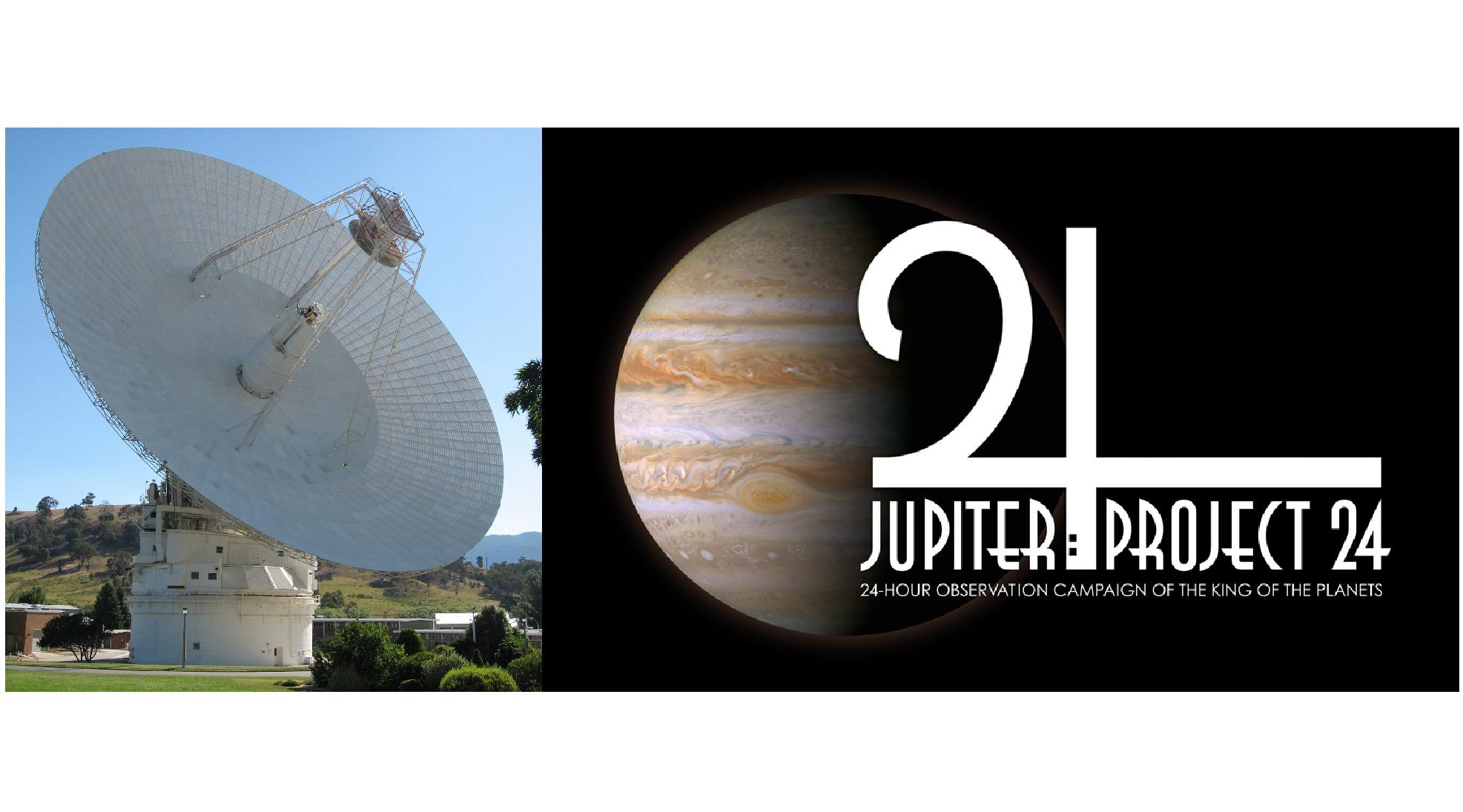Daily Image
27-04-2010Today's colloquium: Tracking Jupiter at microwave frequencies after the 2009 impact (Shinji Horiuchi, NASA DSN/CSIRO)
| Submitter: | Stefanie Muehle |
| Description: | On 19 July 2009, amateur astronomer Anthony Wesley located near Canberra, Australia, discovered an anomalous dark feature near Jupiter�s south pole. It was soon confirmed with additional observations that the new feature was an impact site created by an unknown object. The only other observed collision with Jupiter occurred 15 years earlier with the catastrophic impact of the Shoemaker-Levy 9 Comet (SL9). Unlike the well-predicted SL9 event, the biggest question to answer this time is whether the impact body was a comet or an asteroid. We started a campaign to track Jupiter at microwave frequencies with NASA�s Deep Space Network (DSN), in Canberra, Goldstone (California), and Madrid, and the Allen Telescope Array (ATA) in California. A 34m DSN radio telescope at Goldstone was operated by students through GAVRT program. Our primary goal was first to detect molecular radio emissions possibly originating from cometary core components, such as OH, H_2O, and NH_3, and second to detect radio bursts in non-thermal continuum emissions, as observed after the SL-9 impact 15 years ago. We used a 70m radio telescope in Canberra and another 70m in Madrid to search for molecular emissions at 1.6 GHz for OH, 22 GHz for water vapors, 23 GHz for ammonia. Several radio spectroscopy observing sessions have been successfully conducted from 23 July to 1 August. We also started continuum emission monitoring, mainly at 2.3 GHz and 8.4 GHz using 34m and 70m DSN telescopes and the ATA. At an early stage of this still on-going monitoring, joint observations were conducted with two 34m telescopes in Canberra and the ATA on 30 July and 9 August in order to have long continuous time coverage and to check flux density scales using a common calibrator source. To highlight this campaign, on 22 November we undertook the Jupiter: Project 24 for the International Year of Astronomy. This campaign was over 24 hours of continuous observation of Jupiter using all three DSN complexes around the world. A couple of DSN 34m telescopes were operated by students organized by two educational programs: GAVRT in California and PARTNeR in Madrid. The Jupiter: Project 24 observations were broadcasted to the world in real time via the Internet. In this talk, we will present a summary of results from the molecular emission search and the continuum flux density monitoring. The evolution of the non-thermal Jupiter radio emission after the July 2009 impact will be discussed, along with a comparison to the increase in the synchrotron radiation caused by the SL9 impact in 1994. |
| Copyright: | Horiuchi |
| Tweet |  |
